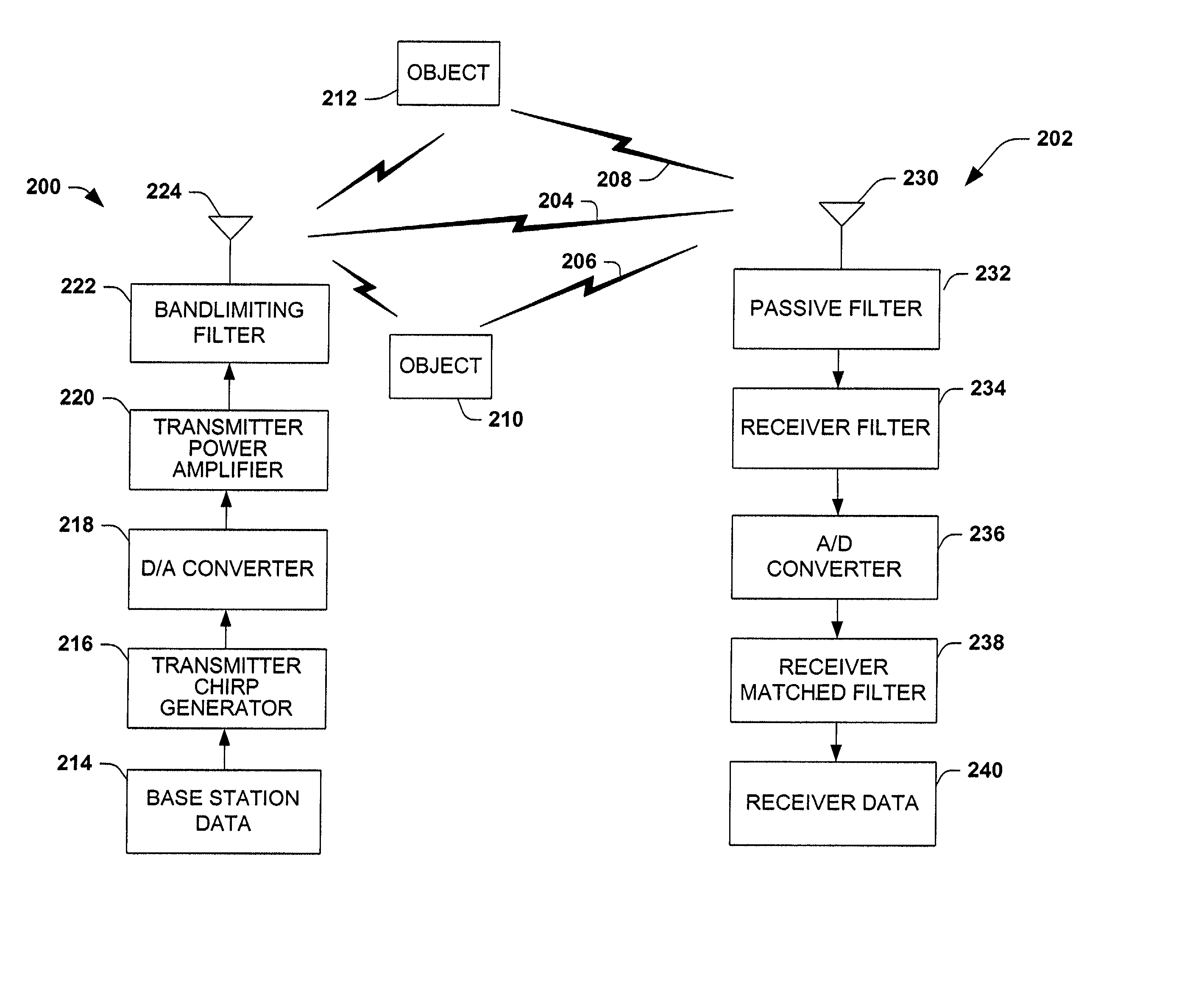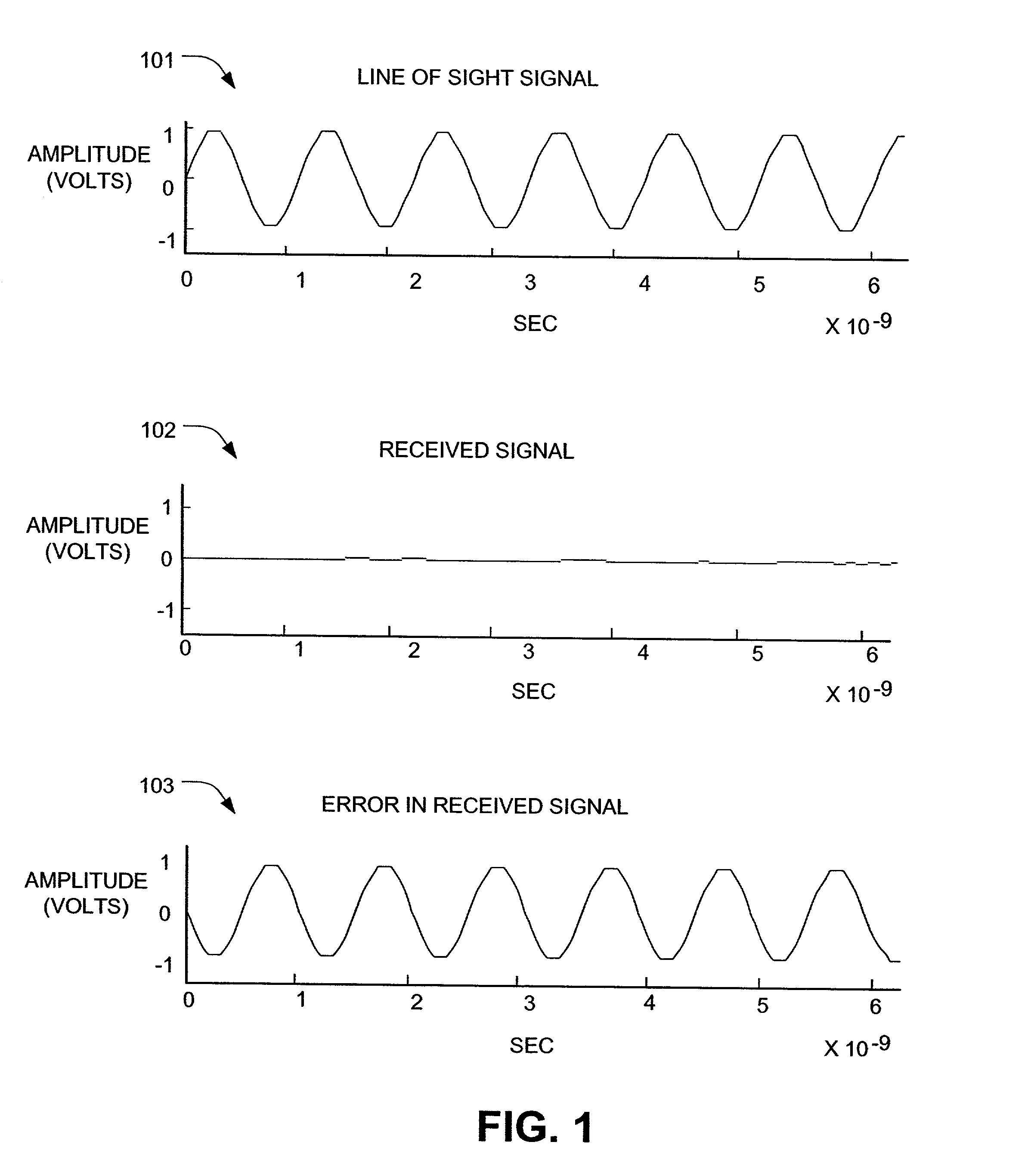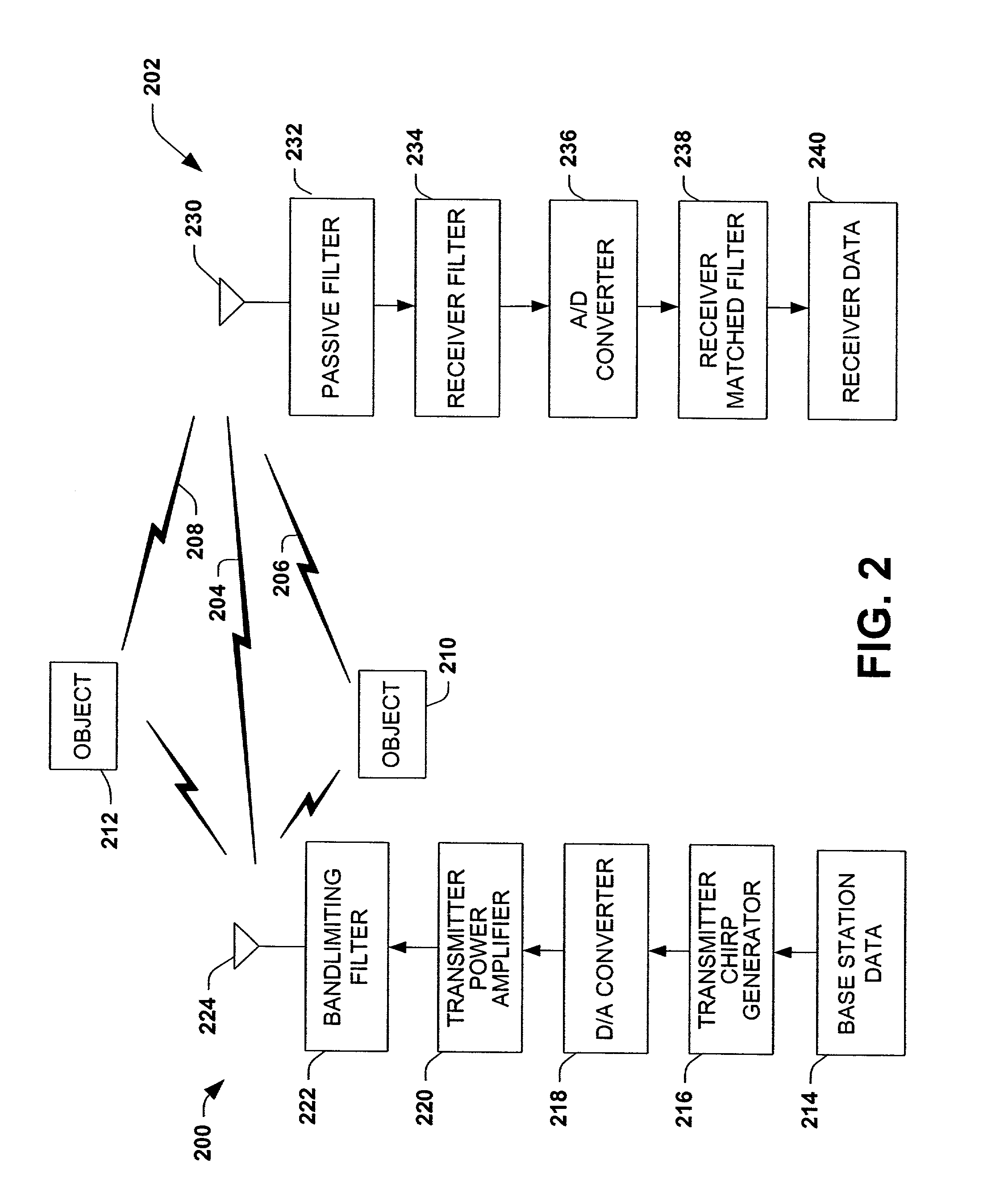Orthogonal chirp modulation in multipath environments
a multipath environment and orthogonal chirp technology, applied in the field of communication, can solve the problems of unfavorable wireless telephone system, inability to achieve the desired orthogonality, and inability to achieve the desired spatial diversity, etc., to achieve the desired orthogonality, reduce transmission errors, and mitigate bandwidth usage
- Summary
- Abstract
- Description
- Claims
- Application Information
AI Technical Summary
Benefits of technology
Problems solved by technology
Method used
Image
Examples
Embodiment Construction
[0038]FIG. 2 illustrates an orthogonal chirp communication system according to one aspect of the invention. The communication system has a base station 200 and a receiving station 202. The base station 200 employs analog chirp signals to send data from the base station 200 to the receiving station 202. The base station 200 and receiving station 202 can simply be a transmitter and receiver, respectively. The analog chirp signals used are relatively narrowband, which means that the analog chirp signals vary in frequency by less than the carrier frequency. Some typical examples of narrowband frequencies are 1 MHz, 3 MHz, 6 MHz, 10 MHz and the like. However, other frequencies can be narrowband. Additionally, it is appreciated that analog chirp signals that are not narrowband can still be used according to aspects the present invention. The only upper limit on usable frequencies is due to atmospheric conditions causing atmospheric attenuation. For applications without atmospheric attenua...
PUM
 Login to View More
Login to View More Abstract
Description
Claims
Application Information
 Login to View More
Login to View More - R&D
- Intellectual Property
- Life Sciences
- Materials
- Tech Scout
- Unparalleled Data Quality
- Higher Quality Content
- 60% Fewer Hallucinations
Browse by: Latest US Patents, China's latest patents, Technical Efficacy Thesaurus, Application Domain, Technology Topic, Popular Technical Reports.
© 2025 PatSnap. All rights reserved.Legal|Privacy policy|Modern Slavery Act Transparency Statement|Sitemap|About US| Contact US: help@patsnap.com



